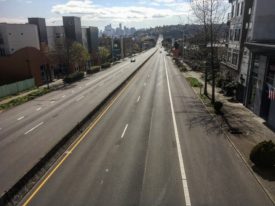Poverty rates are higher in Mississippi than in Massachusetts. But it’s easier to make ends meet in the deep south, where the staples of existence generally cost less. So which place really has worse poverty?
Among the more annoying problems with US poverty rates—and the problems are legion—is that comparisons between states can be spurious because the rates do not account for differences in the cost of living. So in an attempt to straighten things out, I did a little back-of-the-envelope calculation today to find out where poverty hits the hardest. (Assuming that median household income is a decent proxy for the cost of living, I adjusted state poverty rates by incomes. This has been done before, in lots of more complicated ways, but I wanted to figure out something specific.)
As it turns out, the worst states are still the worst—Mississippi, Washington, DC, and Texas have the highest rates of poverty by either accounting. Same for the best—New Hampshire, Minnesota, and the northeast states are the best in the nation using either method. But in the Pacific Northwest, things get interesting—and Washington is the biggest loser.
By official statistics Washington’s and Oregon’s poverty rates are fair to middlin’ (their average 2002, 2003, and 2004 rate was 11.7) and the two states are tied for the 27th lowest rate in the US. But when you adjust for income levels, Oregon’s poverty gets a teensy bit better, climbing to 24th place, while Washington drops like a rock into 37th place—slightly worse than the national average and tied with economic powerhouses like Kentucky.
California takes a page from Washington’s playbook and plummets from 36th place to 48th—behind Mississippi, Arkansas, and Louisiana. Idaho and Montana, meanwhile, both rise substantially in the rankings as their poverty rates are balanced out by their lower costs of living (at least as it’s reflected by median income).
Now obviously, there’s at least one big flaw with my little made-up methodology. By adjusting poverty by income, I’m essentially favoring states for having low incomes. Still, income is something of a proxy for the cost of living. Moreover, some of the worst effects of poverty—crime, violence, poor health, etc—may actually be the effects of income inequality in disguise. So my poverty adjustment tells us which states are most severely amplifying poverty through income inequality (cough, cough, Washington and California).
It’s telling, I think, that most states’ rankings don’t change terribly much with my adjustment. But a few states with average poverty rates and higher incomes may have some real—and hidden—economic problems to sort out. Because problems of equity often manifest themselves in other ways, the federal numbers may not tell us even half the story about how we’re really doing.








